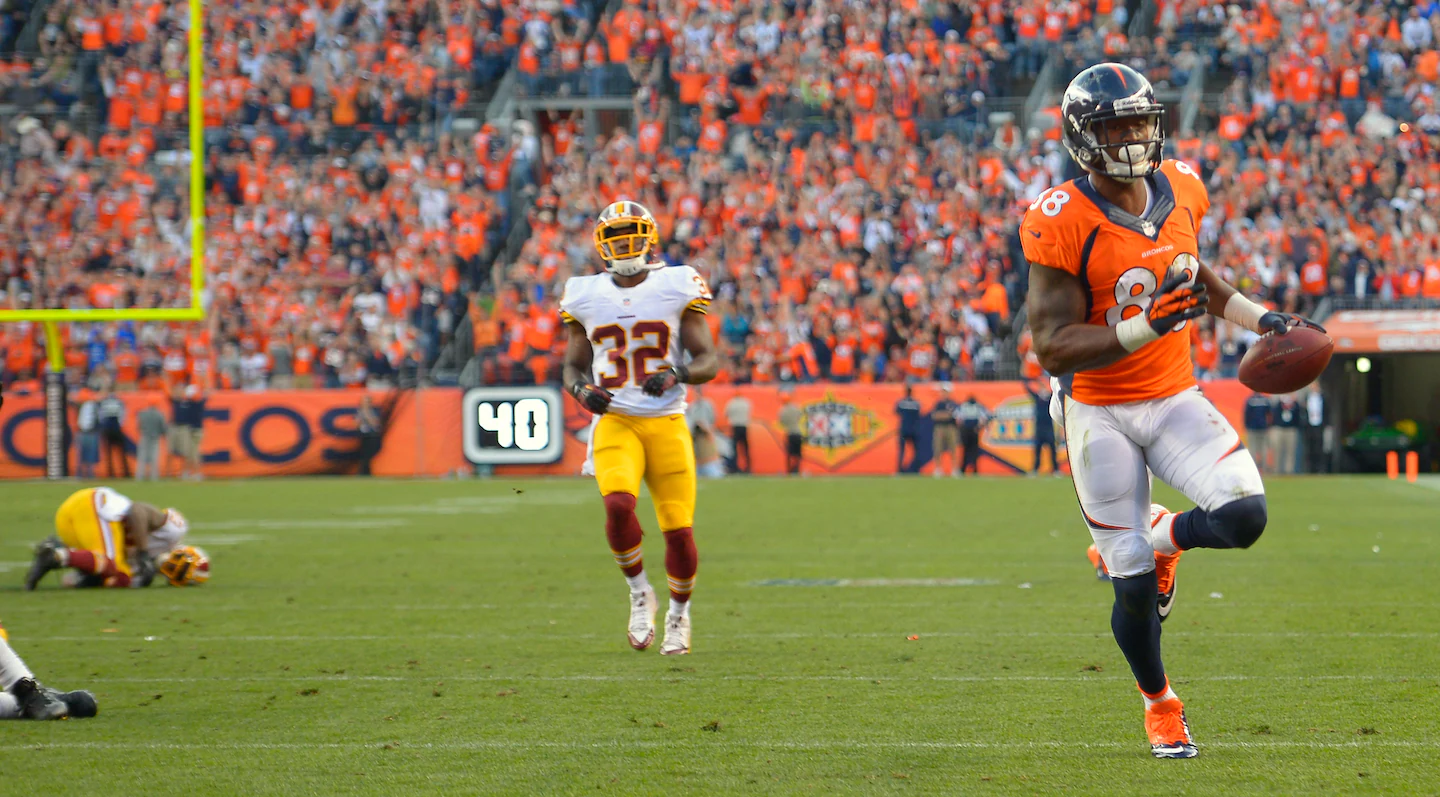Thomas’s diagnosis is associated with “progressive behavior, cognitive and mood abnormalities.” The former NFL star developed depression, anxiety, panic attacks and memory issues in the year before he died. Stage 4 CTE, the most severe, is typically associated with dementia.
“Once I became aware of CTE and began to familiarize myself with the symptoms, I noticed that Demaryius was isolating himself and I saw other changes in him,” Thomas’s mother, Katina Smith, said in the family’s statement. “He was just so young, and it was horrible to see him struggle. His father and I hope all families learn the risks of playing football. We don’t want other parents to have to lose their children like we did.”
Smith and Bobby Thomas, the four-time Pro Bowler’s father, donated their son’s brain to research after the Concussion Legacy Foundation proposed the idea to the family. Ann McKee, a neuropathologist and director of BU’s CTE Center, was part of the research team that studied Thomas’s brain. Per the New York Times, McKee emphasized that Thomas had “two different conditions in parallel,” referring to his seizures and the CTE diagnosis. McKee, whose team has diagnosed more than 300 former NFL players with CTE, said seizures generally are not associated with early-stage CTE.
“Like so many that have gone before, we found Stage 2 CTE in the brain of Demaryius Thomas,” McKee said. “The question I keep asking myself is, ‘When will enough be enough?’ When will athletes, parents and the public at large stop ignoring the risks of American football and insist that the game be changed to reduce subconcussive hits and that the athletes be comprehensively evaluated at the beginning and end of every season?”
Thomas played for three teams during his 10 seasons in the NFL, but he’s best known for his nine years with the Denver Broncos, who selected him out of Georgia Tech with the 22nd pick of the 2010 draft. He won a Super Bowl with the Broncos and was later traded to the Houston Texans during the 2018 season. After a brief stint with the New England Patriots in the following preseason, Thomas finished his career with the New York Jets and retired in 2021, six months before his death.
Athletes in a variety of sports, including soccer and hockey, are at risk of brain damage, but Thomas is the latest NFL player to have been diagnosed with the degenerative brain disease. It has been found in the brains of Hall of Famers Willie Wood and Junior Seau, as well as Phillip Adams, the former NFL player who last year killed six people in Rock Hill, S.C., and was later diagnosed with Stage 2 CTE.
Chris Nowinski, a neuroscientist and CEO of the Concussion Legacy Foundation, said Thomas’s diagnosis stands out because he was a recent retiree and several of his former teammates are still in the NFL. He said he hopes the news surrounding Thomas’s death and his parents’ donation helps persuade team owners to implement more substantial safety measures and alerts other players who may be experiencing similar symptoms.
“I’ve been very disappointed by the football community’s response to this,” Nowinski said. “People can change. This is an entirely preventable disease. For parents considering enrolling their kids in tackle football at 10 this fall, maybe this can be the case that makes them wait until high school to put a helmet on. … Maybe it sends a message to former players if they’re having symptoms.”


